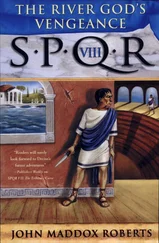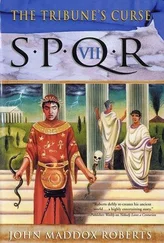John Roberts - Saturnalia
Здесь есть возможность читать онлайн «John Roberts - Saturnalia» весь текст электронной книги совершенно бесплатно (целиком полную версию без сокращений). В некоторых случаях можно слушать аудио, скачать через торрент в формате fb2 и присутствует краткое содержание. Год выпуска: 0101, ISBN: 0101, Издательство: St. Martin, Жанр: Исторический детектив, на английском языке. Описание произведения, (предисловие) а так же отзывы посетителей доступны на портале библиотеки ЛибКат.
- Название:Saturnalia
- Автор:
- Издательство:St. Martin
- Жанр:
- Год:0101
- ISBN:9780312320188
- Рейтинг книги:4 / 5. Голосов: 1
-
Избранное:Добавить в избранное
- Отзывы:
-
Ваша оценка:
- 80
- 1
- 2
- 3
- 4
- 5
Saturnalia: краткое содержание, описание и аннотация
Предлагаем к чтению аннотацию, описание, краткое содержание или предисловие (зависит от того, что написал сам автор книги «Saturnalia»). Если вы не нашли необходимую информацию о книге — напишите в комментариях, мы постараемся отыскать её.
Saturnalia — читать онлайн бесплатно полную книгу (весь текст) целиком
Ниже представлен текст книги, разбитый по страницам. Система сохранения места последней прочитанной страницы, позволяет с удобством читать онлайн бесплатно книгу «Saturnalia», без необходимости каждый раз заново искать на чём Вы остановились. Поставьте закладку, и сможете в любой момент перейти на страницу, на которой закончили чтение.
Интервал:
Закладка:
Wearily, I turned and walked off the rock of execution. I crossed the rain-swept pavement and stopped at the foot of the stair before the temple and I held my arms wide.
“Jupiter, Bringer of Rain!” I shouted. “Jupiter, Best and Greatest, hear me! Have I pleased you? I am polluted with blood and cannot enter your temple, but I stand here awaiting your judgment!”
I waited for a long time, watching the god within the temple, but there was no more lightning, no more thunder. The rain began to fall in earnest. I resheathed my sword and tucked my caestus beneath my belt once more.
Slowly I descended the winding road down the face of the Capitoline. Long before I reached the dark Forum, Jupiter’s good rain had washed all the blood from me.
These things happened in the year 695 of the city of Rome, the consulship of Marcus Calpurnius Bibulus and Caius Julius Caesar.
GLOSSARY
(Definitions apply to the year 695 of the Republic.)
Acta Diurna Literally, “daily acts.” An account of the doings of the Senate and other news, painted on white boards and posted in the Forum. It was probably instituted by Julius Caesar during his aedileship and became immensely popular, the newspaper of its day.
ArmsLike everything else in Roman society, weapons were strictly regulated by class. The straight, double-edged sword and dagger of the legions were classed as “honorable.”
The Gladiuswas a short, broad, double-edged sword borne by Roman soldiers. It was designed primarily for stabbing.
The Caestus was a boxing glove, made of leather straps and reinforced by bands, plates, or spikes of bronze. The curved, single-edged sword or knife called a sicawas “infamous.” Sicas were used in the arena by Thracian gladiators and were carried by street thugs. One ancient writer says that its curved shape made it convenient to carry sheathed beneath the armpit, showing that gangsters and shoulder-holsters go back a long way.
Carrying of arms within the pomerium (the ancient city boundary marked out by Romulus) was forbidden, but the law was ignored in troubled times. Slaves were forbidden to carry weapons within the city, but those used as bodyguards could carry staves or clubs. When street fighting or assassination were common, even senators went heavily armed and even Cicero wore armor beneath his toga from time to time.
Shields were not common in the city except as gladiatorial equipment. The large shield (scutum) of the legions was unwieldy in Rome’s narrow streets but bodyguards might carry the small shield (parma) of the light-armed auxiliary troops. These came in handy when the opposition took to throwing rocks and roof tiles.
Balnea Roman bathhouses were public and were favored meeting places for all classes. Customs differed with time and locale. In some places there were separate bathhouses for men and women. Pompeii had a bathhouse with a dividing wall between men’s and women’s sides. At some times women used the baths in the mornings, men in the afternoon. At others, mixed bathing was permitted. The balnea of the republican era were far more modest than the tremendous structures of the later empire, but some imposing facilities were built during the last years of the Republic.
BasilicaA meeting place of merchants and for the administration of justice.
Campus MartiusA field outside the old city wall, formerly the assembly area and drill field for the army, named after its altar to Mars. It was where the popular assemblies met during the days of the Republic.
CircusThe Roman racecourse and the stadium that enclosed it. The original, and always the largest, was the Circus Maximus. A later, smaller circus, the Circus Flaminius, lay outside the walls on the Campus Martius.
CuriaThe meetinghouse of the Senate, located in the Forum, also applied to a meeting place in general. Hence Curia Hostilia, Curia Pompey, and Curia Julia. By tradition they were prominently located with position to the sky to observe omens.
Eleusinian MysteriesThe most famous mystery cult of the ancient world. Their exact form is unknown because initiates were forbidden to discuss them or write about them. The initiation ceremony took several days and seems to have involved fasting, a descent into the underworld, and culminated in some sort of demonstration of life after death. Cicero, a rational and sceptical man, was an initiate and called his experience one of the most profound of his life, so it must have been an impressive ritual.
Eques (pl. equites )Formerly, citizens wealthy enough to supply their own horses and fight in the cavalry, they came to hold their status by meeting a property qualification. They formed the moneyed upper-middle class.
Families and NamesRoman citizens usually had three names. The given name (praenomen)was individual, but there were only about eighteen of them: Marcus, Lucius, etc. Certain praenomens were used only in a single family: Appius was used only by the Claudians, Mamercus only by the Aemilians, and so forth. Only males had praenomens. Daughters were given the feminine form of the father’s name: Aemilia for Aemilius, Julia for Julius, Valeria for Valerius, etc.
Next came the nomen. This was the name of the clan (gens). All members of a gens traced their descent from a common ancestor, whose name they bore: Julius, Furius, Licinius, Junius, Tullius, to name a few. Patrician names always ended in ius . Plebeian names often had different endings.
StirpsA subfamily of a gens. The cognomen gave the name of the stirps, i.e., Caius Julius Caesar . Caius of the stirps Caesar of gens Julia.
Then came the name of the family branch (cognomen). This name was frequently anatomical: Naso (nose), Ahenobarbus (bronzebeard), Sulla (splotchy), Niger (dark), Rufus (red), Caesar (curly), and many others. Some families did not use cognomens. Mark Antony was just Marcus Antonius, no cognomen.
Other names were honorifics conferred by the Senate for outstanding service or virtue: Germanicus (conqueror of the Germans), Africanus (conqueror of the Africans), Pius (extraordinary filial piety).
Freed slaves became citizens and took the family name of their master. Thus the vast majority of Romans named, for instance, Cornelius would not be patricians of that name, but the descendants of that family’s freed slaves. There was no stigma attached to slave ancestry.
Adoption was frequent among noble families. An adopted son took the name of his adoptive father and added the genetive form of his former nomen. Thus when Caius Julius Caesar adopted his great-nephew Caius Octavius, the latter became Caius Julius Caesar Octavianus.
All these names were used for formal purposes such as official documents and monuments. In practice, nearly every Roman went by a nickname, usually descriptive and rarely complimentary. Usually it was the Latin equivalent of Gimpy, Humpy, Lefty, Squint-eye, Big Ears, Baldy, or something of the sort. Romans were merciless when it came to physical peculiarities.
FascesA bundle of rods bound around with an ax projecting from the middle. They symbolized a Roman magistrate’s power of corporal and capital punishment and were carried by the lictors who accompanied the curule magistrates, the Flamen Dialis , and the proconsuls and propraetors who governed provinces.
ForumAn open meeting and market area. The premier forum was the Forum Romanum , located on the low ground surrounded by the Capitoline, Palatine, and Caelian hills. It was surrounded by the most important temples and public buildings. Roman citizens spent much of their day there. The courts met outdoors in the Forum when the weather was good. When it was paved and devoted solely to public business, the Forum Romanum’s market functions were transferred to the Forum Boarium, the cattle market, near the Circus Maximus. Small shops and stalls remained along the northern and southern peripheries, however.
Читать дальшеИнтервал:
Закладка:
Похожие книги на «Saturnalia»
Представляем Вашему вниманию похожие книги на «Saturnalia» списком для выбора. Мы отобрали схожую по названию и смыслу литературу в надежде предоставить читателям больше вариантов отыскать новые, интересные, ещё непрочитанные произведения.
Обсуждение, отзывы о книге «Saturnalia» и просто собственные мнения читателей. Оставьте ваши комментарии, напишите, что Вы думаете о произведении, его смысле или главных героях. Укажите что конкретно понравилось, а что нет, и почему Вы так считаете.









